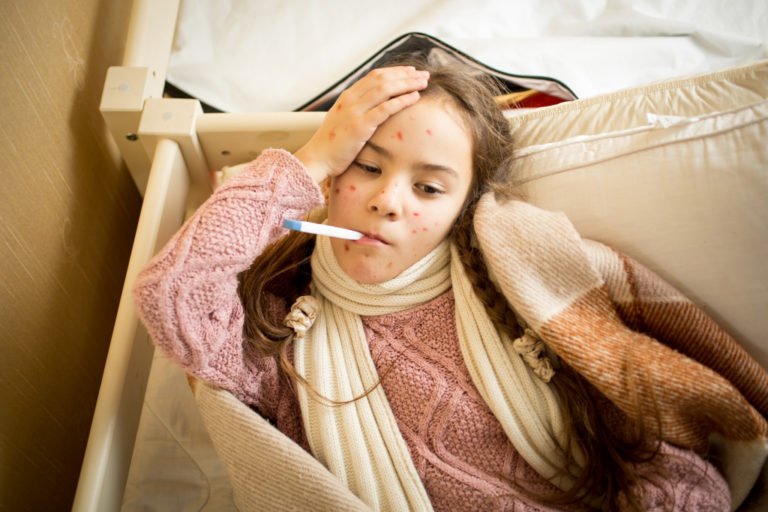Children in the United States have a wide range of experiences and upbringings. Some children are raised in wealthy families and have every opportunity afforded to them, while others come from more humble beginnings and have to work hard for everything they get. Yet, regardless of their circumstances, all children enjoy a life of freedom and exploration. It’s one of the Psychosocial needs, as stated by Erik Erikson.
However, their need for freedom and exploration is one of the main reasons they often get sick. Some common diseases occur primarily in children. Here are some of them and how to avoid them.
Chickenpox
If you were a child once, there’s a good chance that you got chickenpox. About three to four million people get exposed to this disease, most of whom are children.
Chickenpox is a viral infection that causes itchy, painful red spots on the skin. It’s highly infectious, but those that had it before are less likely to have them again.
Having chickenpox can be pretty uncomfortable for children and parents alike, but fortunately, there are some things you can do to prevent it. For example, make sure your child is up-to-date with their vaccinations and practice good hygiene by washing hands regularly. Moreover, you can create a barrier between your child and others by keeping them away from public places when they have chickenpox.
Measles
Measles is another infection that’s caused by a virus. It’s one of the most contagious diseases, and it can be deadly, especially for young children. Measles starts with symptoms like a runny nose, cough, and fever. After a few days, red spots will appear on the face and spread to the rest of the body.
Measles is so contagious that if one person has it, up to 90% of the people around them who are not immune will also get sick. So the best way to prevent measles is to get vaccinated. According to the CDC, all children should receive two doses of the MMR vaccine, starting with the first dose when they are between 12 and 15 months old.
Colds and Flu
A cold or flu is a common illness that affects millions of people each year. It’s usually caused by viruses like rhinovirus and influenza, spreading through coughing, sneezing, or even just breathing.
To prevent colds and the flu from affecting your little ones, ensure they get enough sleep and eat healthy food. It’s also essential to keep them away from anyone who might be sick with these illnesses. Taking these precautions can help keep your child healthy for years to come.

Tooth Cavities
Tooth cavities are a common problem for many children, especially those who eat sugary foods and don’t brush their teeth.
Tooth decay can lead to the lack of teeth among children until they grow back. However, some children can have a rare dental disease known as Hypodontia. If your child has it, they must get dental implants. An implant can ensure that they have the teeth they need to live everyday life.
One of the best ways to prevent tooth decay is to limit your child’s sugar intake and have them brush their teeth at least twice a day. You can start by teaching your children good oral hygiene habits when they’re young so that it becomes part of their daily routine later on in life.
Meningitis
Meningitis is a severe infection when the brain and spinal cord membranes become inflamed. It usually starts with flu-like symptoms like fever, headache, nausea, or vomiting but can also lead to serious complications such as vision loss or hearing, seizures, and even death.
Meningitis is most common in infants and young children, so it’s crucial to get them vaccinated against it. The CDC recommends that all children receive a series of the meningococcal vaccine when they are 11 or 12 years old and then again between the ages of 16 and 18.
Sore Throat or Strep Throat
If your child has been complaining about a sore throat, it’s important to have them checked by a doctor. A sore throat could be the result of many different things, from allergies to strep throat.
Strep throat is an infection that can cause inflammation and swelling in the back of your child’s mouth and throat. It’s caused by bacteria known as Streptococcus pyogenes, which can be spread through coughing or sneezing. Strep throat is contagious and can often be treated with antibiotics prescribed by a doctor.
There are some things you can do at home to help your child feel better. For example, you should try giving them lots of fluids and over-the-counter pain medicine to help relieve their discomfort.
Ear Infection
Ear infections are among the most common childhood illnesses, particularly in infants and young children. They occur when inflammation or infection in the middle ear, which is the space behind the eardrum.
Ear infections can be caused by bacteria or viruses and are often accompanied by other symptoms such as fever, sore throat, or congestion. In some cases, ear infections can lead to hearing loss.
To prevent your child from getting an ear infection, make sure they practice good hygiene habits and avoid exposure to tobacco smoke. If your child does get an ear infection, it’s important to have them treated by a doctor so that it doesn’t become a serious problem.
Looking for ways to keep your little ones healthy and happy? Take a look at some of the most common childhood diseases, including colds, tooth cavities, meningitis, strep throat, and ear infections. By practicing good hygiene habits and getting vaccinated against these illnesses as recommended by healthcare professionals, you can help prevent your child from getting sick and keep them on the path to a healthy, happy childhood.













